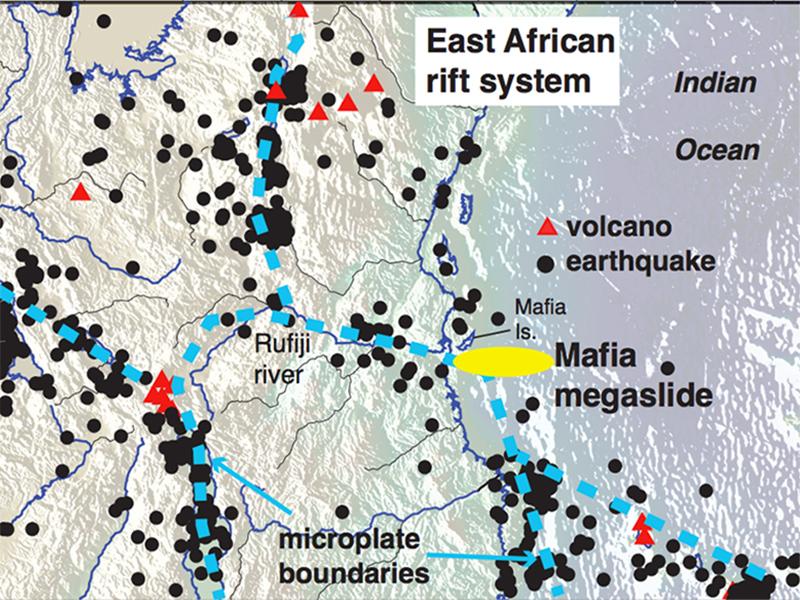Tulane part of study that discovers massive submarine landslide offshore Tanzania
A Tulane University researcher is part of team of scientists evaluating the hazards associated with submarine landslides beneath the Indian Ocean that are associated with the East African Rift System, a seismically and volcanically active series of continental fractures.
Geophysicist Cynthia Ebinger, the Marshall-Heape Chair Professor in the Department of Earth and Environmental Sciences, said the study demonstrates the massive scale of submarine landslides and the potential link to such landslides in the Gulf of Mexico.
The study was recently published in the open-access journal Nature Communications. The team was led by Vittorio Maselli, an assistant professor in the Department of Earth and Environmental Sciences at Dalhousie University in Halifax, Nova Scotia.
“The work has implications for submarine landslide hazards in Africa and worldwide, including the Gulf of Mexico."
Tulane geophysicist Cynthia Ebinger
“Submarine landslides represent a serious threat to engineered sea-floor structures and to coastal societies due to their potential in generating catastrophic tsunami waves,” the study says.
Ebinger said the study is relevant due to a recent study out of Florida State University that showed that an average of 10 underwater landslides triggered by the passage of seismic waves from distant earthquakes occur each year in the Gulf of Mexico.
“The work has implications for submarine landslide hazards in Africa and worldwide, including the Gulf of Mexico, and highlight the need for mapping and monitoring of coastal margins to mitigate the hazards.”
Faulting and earthquakes occur extensively along the flanks of the East African Rift System, resulting in remobilization of sediment in the form of landslides, the study says. To date, constraints on the occurrence of submarine landslides are lacking, leaving unanswered a link between rifting and slope instability.
One of the highlights of the study is the discovery of one of the biggest landslides on Earth — the Mafia mega-slide — which occurred around 17 million years ago off the coast of East Africa. The mega-slide, named for Mafia Island in the Indian Ocean, triggered large and potentially tsunamic landslides likely through earthquake activity and enhanced sediment supply. The study is a first step in evaluating the risk associated with underwater landslides in the region.
“Nearby but smaller landslides are linked to the onset of earthquakes and volcanic eruptions in the East African rift system where the African plate is slowly separating into several smaller plates, much like what happened between N. America and Africa 180 million years ago,” Ebinger said.
“I joined the team of scientists mapping the mega-landslide deposits in the Indian Ocean to discover the probable cause of the landslide: what process caused such a large landslide, information needed to understand the triggers for submarine landslides in offshore Africa, and even the Gulf of Mexico.”
As part of her work, she analyzed patterns in river drainage along with areas of earthquake activity, large faults and volcanic eruption history in East Africa to evaluate the causes.

